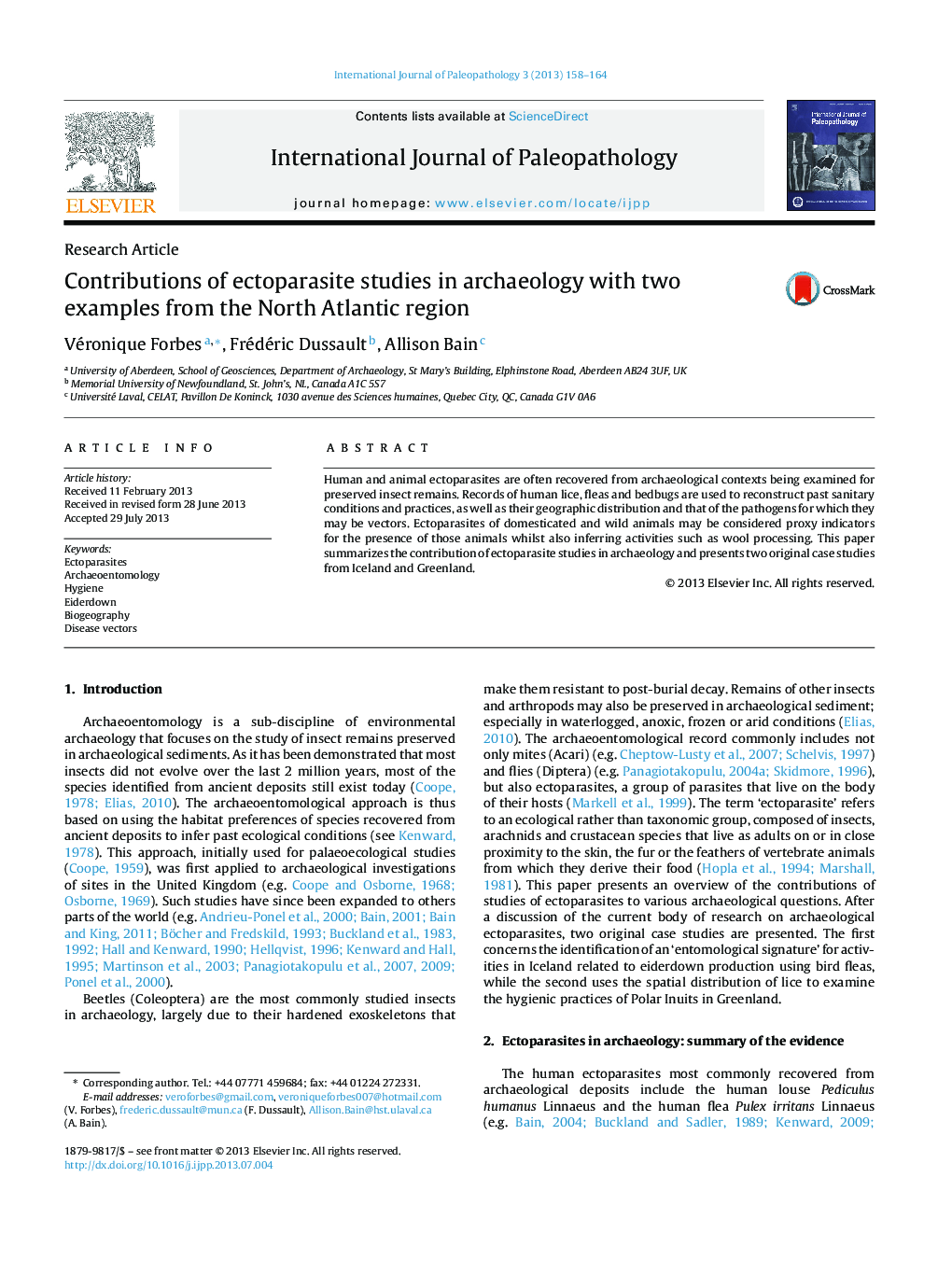| Article ID | Journal | Published Year | Pages | File Type |
|---|---|---|---|---|
| 101406 | International Journal of Paleopathology | 2013 | 7 Pages |
•We provide a summary of the applications of ectoparasitic studies in archaeology.•Bird fleas (Siphonaptera, Ceratophyllidae) are identified from eiderdown production sites in Iceland.•Human and animal lice help to reconstruct hygienic practices in ancient Greenland.
Human and animal ectoparasites are often recovered from archaeological contexts being examined for preserved insect remains. Records of human lice, fleas and bedbugs are used to reconstruct past sanitary conditions and practices, as well as their geographic distribution and that of the pathogens for which they may be vectors. Ectoparasites of domesticated and wild animals may be considered proxy indicators for the presence of those animals whilst also inferring activities such as wool processing. This paper summarizes the contribution of ectoparasite studies in archaeology and presents two original case studies from Iceland and Greenland.
Graphical abstractFigure optionsDownload full-size imageDownload as PowerPoint slide
